Discover the essential techniques for achieving perfect pants fit‚ addressing common issues like camel toe and saggy bottoms‚ and learning how to measure for comfort and style.
Understanding the Importance of Proper Fit
Proper fit is the cornerstone of comfort and style in pants. A well-fitting pair enhances confidence‚ eliminates discomfort‚ and ensures a polished appearance. Poor fit can lead to issues like camel toe‚ saggy bottoms‚ or restricted movement‚ which can ruin an outfit’s aesthetic and functionality. Many struggle with fit due to variations in sizing and cuts across brands‚ making it challenging to find the perfect pair. Addressing these issues requires understanding key measurements and how pants should drape on the body. Achieving the right balance between comfort and style is crucial‚ as ill-fitting pants can detract from both. By prioritizing proper fit‚ individuals can enjoy a seamless blend of functionality and fashion‚ ensuring their pants look and feel great in every situation.
Overview of Common Pants Fit Issues
Common pants fit issues often stem from improper measurements and design flaws. One prevalent problem is the “camel toe” effect‚ caused by a too-tight crotch area. Another issue is saggy bottoms‚ which occur when pants are too loose around the hips and thighs. Some people experience a “crotch pouch‚” where fabric bunches unflatteringly in the groin area. Additionally‚ pants that are too tight can restrict movement‚ while those that are too baggy may look sloppy. Variations in sizing across brands further complicate finding the right fit‚ leading to frequent alterations or dissatisfaction. Addressing these issues requires understanding how pants should fit key areas like the waist‚ hips‚ thighs‚ and knees. By identifying these common problems‚ individuals can better navigate the challenges of finding well-fitting pants that combine comfort and style effectively.
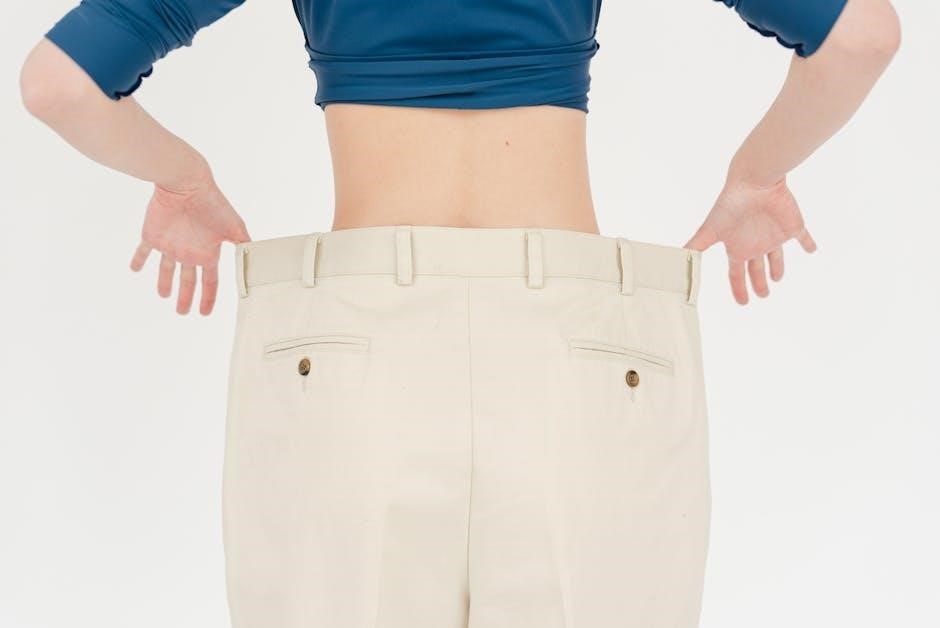
Objectives of the Pants Fit Guide
The primary objective of this Pants Fit Guide is to empower individuals with the knowledge to find pants that fit perfectly‚ combining comfort‚ style‚ and functionality. By understanding key measurements‚ common fit issues‚ and the characteristics of different pant types‚ readers can make informed decisions when selecting pants. This guide aims to simplify the often-confusing world of sizing‚ addressing topics such as waist fit‚ inseam‚ rise‚ and fabric impact. It also provides practical tips for using sizing charts‚ identifying quality tailoring‚ and understanding brand-specific sizing variations. Ultimately‚ the guide seeks to help individuals build a wardrobe of pants that not only flatter their body type but also enhance their confidence and overall style. Whether for casual wear‚ formal events‚ or everyday use‚ this guide is designed to be a comprehensive resource for achieving the perfect fit.
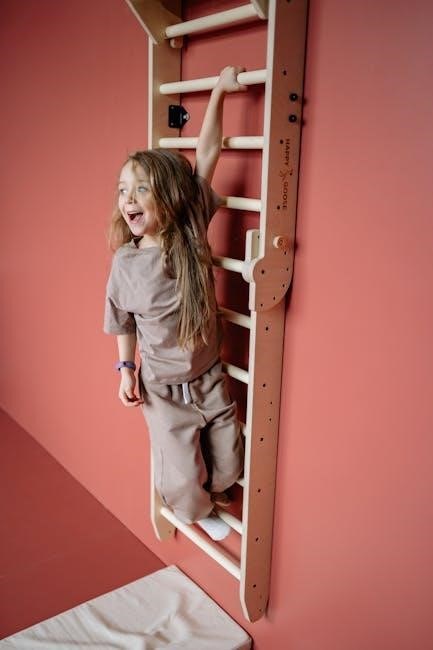
Key Measurements for Pants Fit
Accurate measurements are crucial for a perfect fit. Key measurements include waist‚ inseam‚ outseam‚ rise‚ and hip. These ensure comfort‚ style‚ and proper proportions for any pant style.
Waist Measurement: How to Measure Correctly
To measure your waist accurately‚ stand upright and wrap a flexible tape measure around your natural waistline‚ typically just above the belly button. Ensure the tape is snug but not tight‚ keeping it parallel to the floor. Take note of the measurement where the tape meets. For those with a less-defined waist‚ the narrowest point of the torso is usually the best reference. This measurement is crucial for determining the ideal pants size‚ as it directly affects how the waistband fits—neither too tight nor too loose. Always measure over undergarments for the most accurate result. Proper waist measurement ensures comfort and prevents issues like gapping or constriction. Consistency in measurement is key to achieving the perfect fit for any pant style or fabric.
Inseam and Outseam: Understanding the Difference
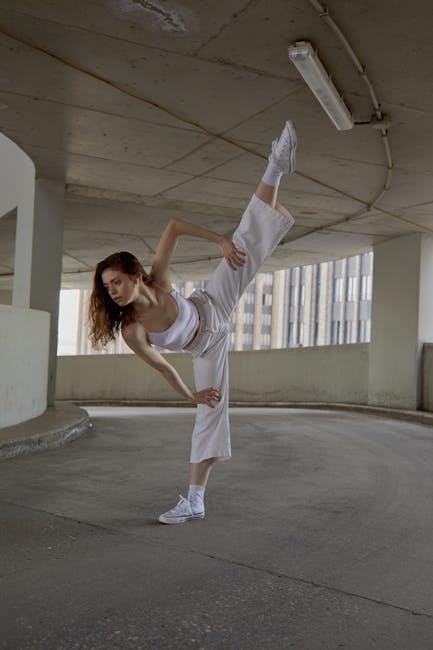
The inseam and outseam of pants are crucial measurements that determine fit and style. The inseam measures the length of the inside of the pant leg‚ from the crotch seam down to the ankle bone. This measurement is essential for ensuring the pants are the correct length and fit comfortably around the legs. On the other hand‚ the outseam measures the length from the top of the waistband to the bottom of the hem on the outside of the leg. This measurement influences the overall appearance and how the pants drape. Understanding both measurements helps in selecting pants that fit well and suit your style preferences. Accurate inseam and outseam measurements are particularly useful when shopping online‚ as they guide size selection and ensure the desired break over the shoes.
Rise Measurement: High‚ Mid‚ or Low
Rise measurement refers to the distance from the crotch seam to the top of the waistband‚ determining how high or low the pants sit on the body. High-rise pants have a longer rise‚ sitting above the natural waistline‚ often providing more coverage and support. Mid-rise pants fall just below or at the natural waistline‚ offering a balanced fit that suits most body types. Low-rise pants have a shorter rise‚ sitting lower on the hips‚ creating a trendy‚ more relaxed look. The choice of rise depends on personal comfort‚ body proportions‚ and style preferences. High-rise options can elongate the torso‚ while low-rise styles emphasize a sleek‚ modern aesthetic. Understanding rise measurements helps in selecting pants that flatter your figure and align with current fashion trends.
Seat and Thigh Measurement: Ensuring Comfort and Fit
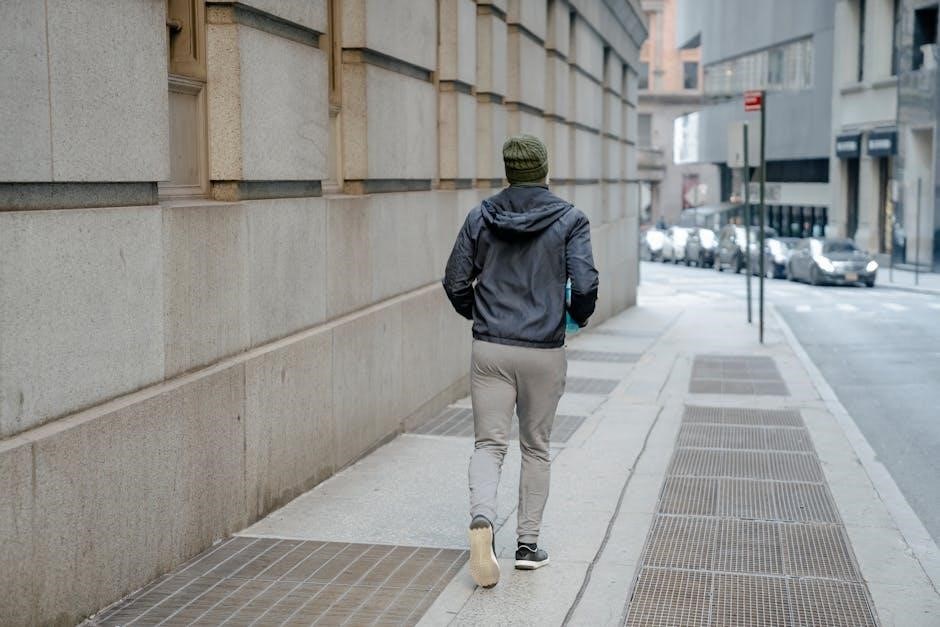
The seat and thigh measurements are critical for a comfortable and flattering fit. The seat refers to the width of the pants across the buttocks‚ while the thigh measurement ensures the fabric isn’t too tight or too loose around the legs. Proper fit in these areas prevents discomfort and unflattering silhouettes. If the seat is too tight‚ it can cause restricted movement and an unappealing look. Conversely‚ excessive fabric in the thighs can make the pants appear baggy. Achieving the right balance is key‚ as it allows for a natural drape and ease of movement. Different body types may require adjustments‚ such as slimmer cuts for lean builds or roomier fits for athletic thighs. Ensuring the right proportions in the seat and thigh guarantees both comfort and style‚ making these measurements essential for a well-fitted pair of pants.
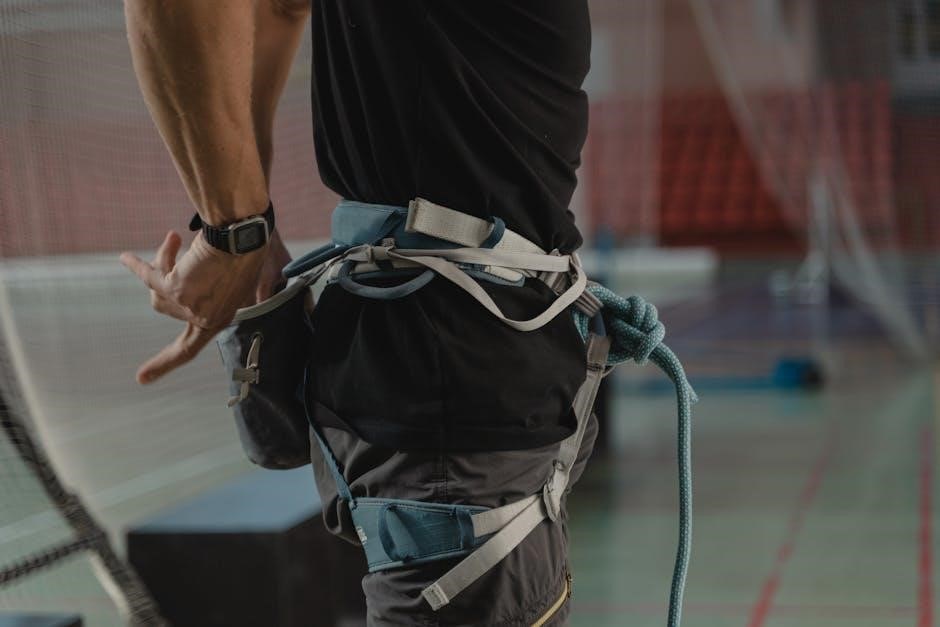
Types of Pants and Their Fit Characteristics
Different styles like jeans‚ chinos‚ and dress pants offer varied fits‚ from slim to relaxed‚ catering to diverse body types and preferences for comfort and aesthetics.
Jeans: Fit Variations (Slim‚ Straight‚ Bootcut)
Jeans come in various fits to suit different body types and styles. Slim-fit jeans are tightly cut through the thigh and leg‚ offering a modern‚ streamlined look. Straight-fit jeans maintain a consistent width from thigh to ankle‚ providing a classic‚ versatile option. Bootcut jeans are wider at the bottom‚ creating a balanced silhouette that works well with boots or for those with larger thighs. Each style caters to individual preferences‚ ensuring comfort and aesthetics. Understanding these variations helps in choosing the perfect pair for your body type and lifestyle. Proper fit enhances both appearance and comfort‚ making it essential to consider these differences when selecting jeans.
Chinos: Classic Fit vs. Slim Fit
Chinos are a versatile and stylish option‚ available in two primary fits: classic and slim. The classic fit is roomier‚ with a relaxed cut through the thigh and leg‚ offering comfort and a timeless appeal. It is ideal for those who prefer a traditional‚ slightly looser silhouette. On the other hand‚ the slim fit is more modern‚ featuring a tailored cut that skims the body‚ creating a leaner appearance. This fit is perfect for fashion-forward individuals or those with slimmer builds. Both styles are crafted from lightweight‚ breathable fabric‚ making them suitable for casual or semi-formal occasions. Understanding the differences between classic and slim-fit chinos helps in selecting the right pair for your body type and personal style‚ ensuring a polished and comfortable look. Proper fit enhances both aesthetics and comfort‚ making it essential to choose wisely.
Dress Pants: Modern Fit vs. Traditional Fit
Dress pants are available in two distinct fits: modern and traditional. The modern fit is streamlined‚ with a slimmer silhouette through the thigh and leg‚ offering a contemporary look. It is designed to create a sleek‚ tailored appearance‚ ideal for those who prefer a fashionable yet professional style. In contrast‚ the traditional fit is more generous‚ with a looser cut that provides comfort and a classic appeal. This fit is perfect for individuals who value timeless elegance and a relaxed feel. Both styles are typically made from high-quality fabrics like wool or cashmere‚ ensuring durability and sophistication. The choice between modern and traditional fit depends on personal preference‚ body type‚ and the desired aesthetic. Each offers unique benefits‚ ensuring a polished look for formal or business-casual settings. Understanding these distinctions helps in selecting the perfect pair for any occasion.
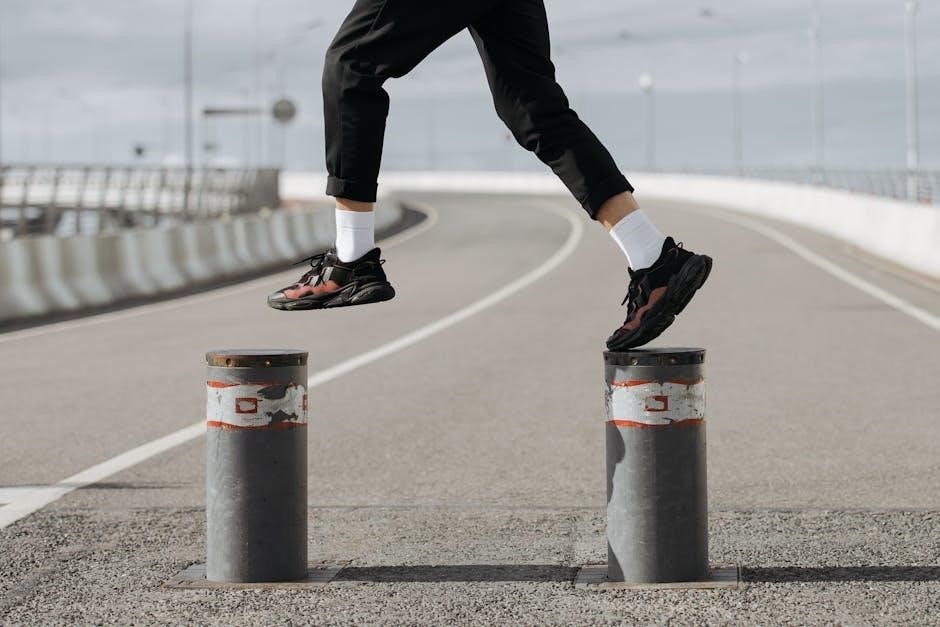
Casual Pants: Relaxed Fit vs. Tailored Fit
Casual pants come in two primary fits: relaxed and tailored. The relaxed fit offers a loose‚ comfortable silhouette with a generous cut through the thigh and leg‚ making it ideal for casual outings and everyday wear. These pants often feature soft fabrics like cotton or denim and are perfect for a laid-back‚ effortless look. On the other hand‚ the tailored fit provides a slimmer‚ more structured appearance‚ with a narrower cut that skims the body. This fit is versatile‚ suitable for both casual and semi-formal settings. Tailored casual pants are typically made from fabrics like chino or twill‚ offering a polished yet relaxed aesthetic. Both styles cater to different preferences‚ allowing individuals to choose between comfort and a more refined look. Understanding these distinctions helps in selecting the right pair for various occasions‚ ensuring both comfort and style.
How Pants Should Fit: Key Areas to Focus On
Proper fit is crucial for comfort and style. Focus on the waistband‚ hips‚ thighs‚ knees‚ and leg opening to ensure a balanced‚ flattering silhouette that moves naturally with you.
Waistband Fit: Avoiding Gapping or Tightness
A well-fitted waistband is essential for both comfort and aesthetics. It should sit smoothly against your body without digging in or leaving gaps. A gapping waistband can cause the pants to slide down‚ while a too-tight band can restrict movement and create discomfort. To achieve the right fit‚ ensure the waistband aligns with your natural waistline‚ neither slipping nor compressing excessively. If the waistband feels tight‚ it may be too small‚ while excessive looseness indicates a potential need for a smaller size or adjustments. Pay attention to the fabric’s stretch and the style of the pants‚ as some designs‚ like high-rise or elastic waistbands‚ offer more flexibility. Proper waistband fit ensures the pants stay in place and provides a polished‚ tailored appearance.
Hip and Seat Fit: Smoothness and Comfort
A proper fit around the hips and seat is crucial for both comfort and style. The fabric should lie smoothly against your body‚ avoiding wrinkles or pulling. If the fit is too tight‚ it can cause discomfort and restrict movement‚ while excessive looseness may result in an unflattering silhouette. The ideal fit should feel natural‚ with the pants moving effortlessly with your body. For a polished look‚ ensure the seat isn’t overly baggy or tight‚ as this can draw attention away from other well-fitted areas. Different fabrics and pant styles‚ such as stretch denim or tailored trousers‚ offer varying levels of flexibility. Balancing comfort and support in the hips and seat ensures a flattering appearance and prevents issues like sagging or strain. Proper fit in this area enhances overall confidence and the versatility of the pants for any occasion.
Thigh Fit: Avoiding Tightness or Excess Fabric
The fit around the thighs is essential for both comfort and aesthetics. Pants should neither feel restrictive nor appear overly loose in this area. A well-fitted thigh ensures smooth movement and prevents discomfort‚ especially during activities like walking or sitting. If the fabric feels tight‚ it can cause chafing or limit mobility‚ while excess fabric may create an unflattering‚ baggy appearance. The ideal fit should skim the thighs naturally‚ maintaining a balance between relaxation and structure. For athletic builds‚ slightly roomier thighs may be necessary‚ while slimmer individuals might prefer a more streamlined fit. Proper thigh fit also enhances the overall proportion of the pants‚ ensuring they look tailored rather than ill-fitting. Avoiding extremes in tightness or looseness ensures a comfortable‚ polished look that complements the rest of the garment. Achieving this balance is key to a flattering and functional pair of pants.
Knee and Leg Opening: Balance in Fit
The knee and leg opening are critical areas for achieving a balanced fit in pants. The fabric around the knees should neither be too tight nor too loose‚ ensuring comfort and mobility. A well-fitted knee allows for natural movement without restricting bending or walking. The leg opening‚ which refers to the width at the bottom of the pant leg‚ should complement the overall style while maintaining proportion. Slim-fit pants typically have a narrower opening‚ while looser styles may flare slightly. Excess fabric around the knees can create an unflattering appearance‚ while tightness may cause discomfort. The goal is to strike a balance where the pants drape smoothly over the knees and legs‚ avoiding both constriction and excessive bulk. Proper fit in this area enhances the overall silhouette‚ ensuring a polished and functional design. Paying attention to these details ensures pants look and feel their best. Balance is key for both style and comfort.
Common Pants Fit Adjustments
Common adjustments include tailoring inseams‚ waistbands‚ and hems to ensure a perfect fit. These tweaks enhance comfort and style‚ addressing specific fit issues for various body types and preferences.
Crotch Fit: Avoiding the “Camel Toe” Effect
The “camel toe” effect occurs when pants fit too tightly around the crotch area‚ creating an unflattering and uncomfortable outline. To avoid this‚ ensure the fabric has enough drape and isn’t overly tight. Higher-rise pants can help distribute fabric more evenly‚ reducing pressure. Slim-fit styles with stretch fabrics often minimize this issue. Avoid pants with overly tight inseams or low rises‚ as these exacerbate the problem. Additionally‚ look for designs with a gusset or curved seams‚ which provide a smoother fit. Pay attention to the thickness of the fabric—thicker materials may create more compression. Proper tailoring can also address this issue by adjusting the crotch depth or adding subtle ease. Balancing fit‚ fabric choice‚ and design features ensures comfort and avoids the “camel toe” effect altogether.
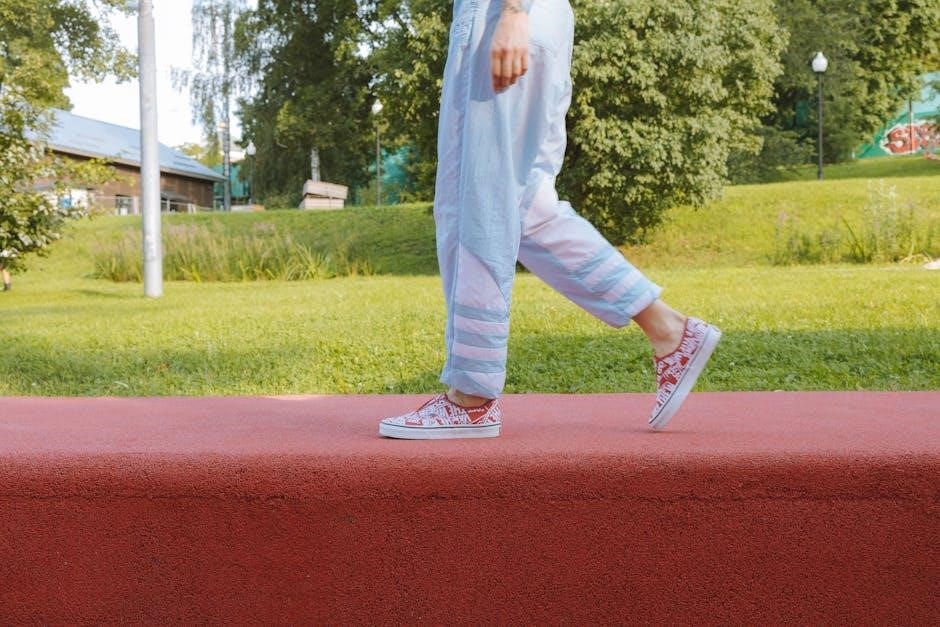
Pant Break: How Much is Too Much?
Pant break refers to the fold or crease at the bottom of pants where the fabric meets the shoe. The right amount of break ensures a polished look without excess fabric. A “full break” creates a noticeable fold‚ while a “half break” or “quarter break” is more subtle. Too much break can make pants appear baggy or outdated‚ while too little may look overly streamlined. The ideal break depends on pant style and shoe type. For dress pants‚ a quarter to half break is standard‚ while jeans or casual pants may have a slightly longer break; Excessive break beyond the shoe’s top can overwhelm the silhouette. Tailoring can adjust the break to balance style and proportion‚ ensuring the pants skim the shoes neatly without pooling fabric. Finding the right balance enhances the overall fit and aesthetic appeal of the pants; Proper tailoring ensures a clean‚ modern finish.
Hemming Pants: Cuffed vs. Uncuffed
Hemming pants involves altering the length to fit perfectly‚ with two popular options: cuffed and uncuffed. Cuffed pants feature a folded-up hem‚ typically 1-2 inches‚ creating a stylish detail that adds structure and can balance proportions. This style works well with dress pants or jeans‚ offering a vintage or tailored look. Uncuffed pants‚ in contrast‚ have a straight hem without a fold‚ providing a sleek‚ minimalist appearance. The choice depends on personal style and the desired aesthetic. Cuffed hems are ideal for those who want to add texture or emphasize their shoes‚ while uncuffed hems offer a clean‚ modern finish. Both options require precise measurement to avoid excess fabric or a too-short look. Hemming ensures pants drape smoothly over shoes‚ completing the overall fit. Proper hemming enhances both comfort and style‚ making it a crucial step in achieving the perfect pant fit. Balancing these elements ensures a polished‚ cohesive look. Tailoring can refine the hem to suit individual preferences and garment type‚ ensuring optimal results. Hemming is a finishing touch that elevates the quality and appearance of pants‚ making it a key detail in any wardrobe. Attention to detail in hemming ensures a professional finish‚ whether for casual or formal wear. Ultimately‚ the choice between cuffed and uncuffed hems should align with the intended use and style of the pants.
Waist Adjustments: Darts and D-ring Modifications
Waist adjustments are essential for achieving a perfect fit‚ addressing issues like gapping or tightness. Darts are small folds sewn into the fabric to shape the waistband‚ ensuring a smooth‚ contouring fit. They are often used in tailored pants to create a more defined silhouette. D-ring modifications involve adding adjustable straps or hardware to the waistband‚ allowing for fine-tuning of the fit. This method is particularly useful for pants without belt loops or for those who prefer a customizable waistline. Both techniques enhance comfort and eliminate the need for constant adjustments. Darts are ideal for subtle shaping‚ while D-ring modifications offer versatility. These adjustments ensure the waistband sits evenly‚ neither too tight nor too loose‚ providing a polished and professional appearance. They are especially beneficial for individuals with unique waistline needs or preferences. Proper execution of these modifications requires precision and expertise to maintain the garment’s structural integrity and aesthetic appeal.

Tips for Finding the Perfect Fit
Exploring sizing charts‚ fabric types‚ and tailored adjustments ensures a personalized fit. Understanding brand variations and seeking professional alterations can enhance comfort and style‚ making every pair feel bespoke.
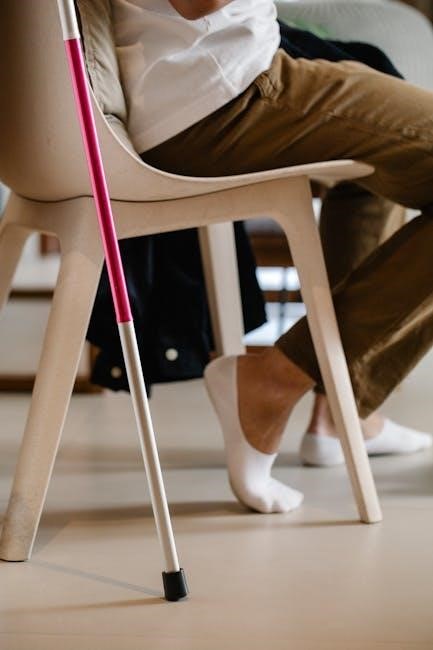
Understanding Sizing Variations Across Brands
One of the most challenging aspects of finding the perfect pants fit is navigating the sizing differences between brands. Each brand may have its own interpretation of sizes‚ making it difficult to rely on a universal size label. For instance‚ a size 32 waist in one brand might fit differently compared to another. This variation often stems from factors like target audience‚ clothing style‚ and measurement methods. To overcome this‚ it’s essential to familiarize yourself with a brand’s specific sizing chart before making a purchase. Additionally‚ considering the type of pants—such as jeans‚ chinos‚ or dress pants—can help‚ as fit preferences may vary across categories. By understanding these variations‚ you can make more informed choices and reduce the likelihood of sizing mismatches. Always check reviews or size guides for further insights. If unsure‚ professional tailoring can fine-tune the fit to your preferences.
The Role of Fabric in Fit and Comfort
Fabric plays a crucial role in determining both the fit and comfort of pants. Different materials have unique properties that affect how they drape‚ stretch‚ and conform to the body. For example‚ stretch fabrics like elastane or spandex provide flexibility and movement‚ making them ideal for active lifestyles. Natural fibers such as cotton and linen offer breathability‚ while synthetic fabrics like polyester may lack airflow but are often more durable. The weight of the fabric also matters; heavier fabrics like wool are better suited for colder climates‚ while lightweight options like chambray work well in warmer conditions. Additionally‚ the texture of the fabric can influence comfort—smooth fabrics like silk feel luxurious against the skin‚ while rougher textures may cause irritation. Choosing the right fabric based on your lifestyle and preferences ensures a better fit and enhanced comfort throughout the day.
By considering fabric type‚ you can optimize both aesthetics and functionality in your pants.
How to Use Online Sizing Charts Effectively
Using online sizing charts effectively is essential for achieving the best fit when shopping for pants. Start by taking accurate body measurements‚ such as waist‚ hip‚ and inseam‚ using a flexible tape measure. Compare these measurements to the chart provided by the retailer‚ ensuring you understand their specific sizing standards. Pay attention to whether the chart is based on body measurements or garment measurements‚ as this can affect fit. Additionally‚ read customer reviews to gauge how a particular style fits others with similar measurements. If unsure‚ consider ordering two sizes and returning the one that doesn’t fit. Many brands also offer fit guides or sizing videos‚ which can provide additional insights. By leveraging these tools‚ you can make more informed purchasing decisions and increase the likelihood of finding pants that fit well.
Accurate measurements and thorough comparison are key to success.
Professional Tailoring: When and Why It’s Necessary
Professional tailoring is often necessary to achieve a perfect fit for pants‚ especially if off-the-rack options don’t meet your specific needs. Tailors can make precise adjustments to address common fit issues‚ such as uneven hems‚ loose waistbands‚ or ill-fitting seats. If you’ve lost or gained weight‚ tailoring can update your existing pants to maintain a polished look. Additionally‚ high-quality or expensive pants may require alterations to justify their investment. A tailor can also customize details like cuffing‚ pleats‚ or pocket styling to enhance comfort and aesthetics. While not always required‚ professional tailoring is a valuable resource for ensuring your pants look and feel their best‚ making it a worthwhile investment for achieving long-lasting‚ flattering fit.
Expert alterations can transform ill-fitting pants into a bespoke-like wardrobe staple.
Achieving the perfect pants fit is key to confidence and style. Proper measurements‚ understanding fabric‚ and tailoring ensure a flattering‚ comfortable look that elevates your wardrobe.
Investing time in finding your ideal fit pays off in both aesthetics and comfort‚ making every outfit effortlessly polished and personal.
Final Thoughts on Achieving the Perfect Pants Fit
Achieving the perfect pants fit is a combination of proper measurements‚ understanding your body‚ and selecting the right style for your needs. Paying attention to details like waistband comfort‚ thigh room‚ and leg opening balance ensures both aesthetics and functionality. Fabric choice also plays a crucial role‚ as it impacts both comfort and durability. Experimenting with different fits and styles can help you discover what works best for your lifestyle and personal taste. Tailoring is a valuable tool for fine-tuning your pants to create a bespoke fit. Remember‚ the right fit enhances confidence and makes a significant difference in how you look and feel. By investing time in finding your ideal fit‚ you’ll elevate your wardrobe and enjoy long-lasting comfort and style.
Encouragement to Experiment and Find Your Style
Experimenting with different pants styles and fits is a great way to discover what works best for you. Don’t be afraid to step out of your comfort zone and try new looks—whether it’s slim-fit chinos‚ relaxed jeans‚ or tailored dress pants. Every body type and personal style is unique‚ so finding the right balance of comfort and aesthetics is key. Fabric choices‚ colors‚ and details like pockets or stitching can also add a personal touch. Remember‚ fashion is a form of self-expression‚ and pants are a versatile canvas to showcase your individuality. Confidence and comfort are the ultimate markers of great style‚ so embrace the process of finding what makes you feel your best. Enjoy exploring the world of pants and uncovering the perfect fit that reflects who you are!
